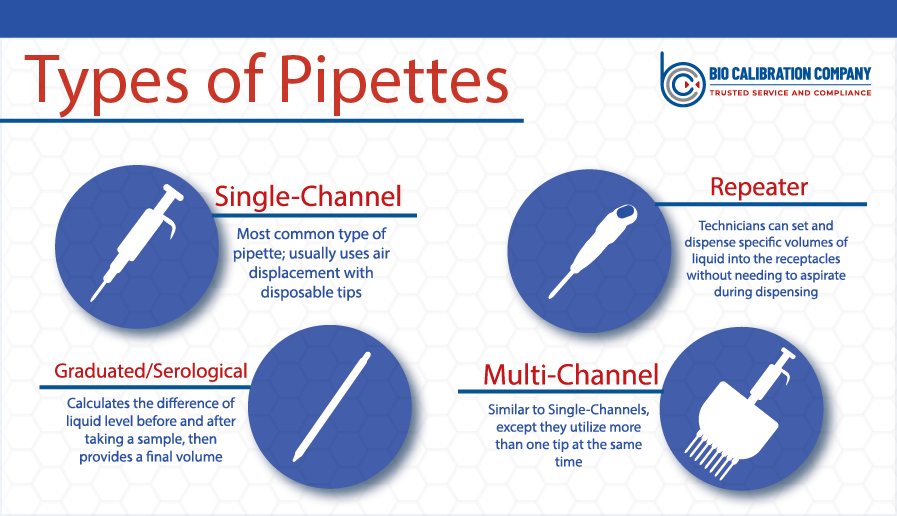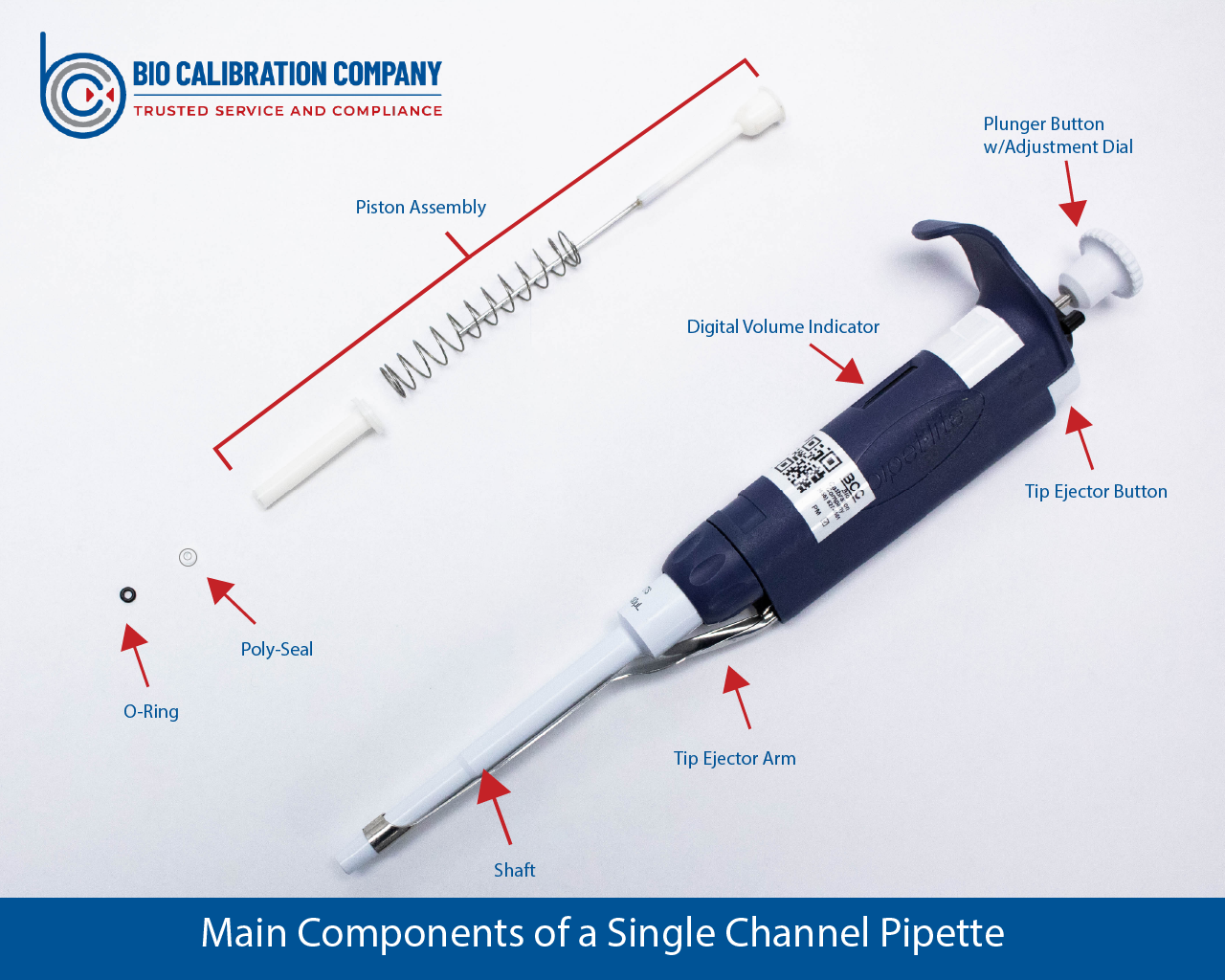
Pipettes Part 1: Best Practices for Pipette Maintenance

Pipettes are used to transfer small, precise volumes of liquid. They have a pivotal and leading role in your laboratory, and their performance is key to ensuring the accuracy and repeatability of your results.
To verify your pipettes are working optimally, it is important to make certain they are used properly and are well maintained. Pipettes take a fair amount of abuse because they are handheld instruments. They must be calibrated and serviced in order to ensure proper function.
Bio Calibration Company is fully accredited and services all types of pipettes, including both air-displacement and positive-displacement pipettes. Air-displacement and positive-displacement pipettes both use a piston, but the former uses air to draw up or dispense the liquid whereas in the latter the piston makes direct contact with the liquid.
Five types of air-displacement and positive-displacement pipettes are available:

Air-displacement pipettes are some of the most common you’ll see in a laboratory. They operate using a piston system that generates a vacuum to draw in volumes of liquid.
Components include:
It’s important to ensure all components are cleaned and replaced if damaged.

Properly maintaining your pipettes reduces costs in the long run, limiting costs for labor and parts for replacements. It also minimizes your risk for incorrect measurements and inaccurate data.
You can take a few steps to produce maximum accuracy and precision with your pipettes. Cleaning, repair, and calibration are all important for preventive maintenance (PM).
Clean them often with laboratory wipes and an alcohol-based solution (70% ethanol or 60% isopropanol), and pay close attention to the area at the bottom of the shaft where the pipette tip is placed. Dirt or debris at this location can cause inaccurate results.
If you often use organic solvents, leave the base of the O-ring open overnight and lubricate the ring weekly. If often using acids and alkalis, lubricate the piston and piston spring in addition to the O-ring.
Sterilize your pipettes by autoclaving them, usually at 121 °C for 20 minutes or more.
Store pipettes vertically on a pipette holder or rack so that residual fluid does not enter the core. They should also be stored at the high volume so that internal springs and pistons are under less pressure.
Preventive Maintenance
Bio Calibration Company can help you with fully accredited PM and calibration services. Most pipette manufacturers recommend PM on an annual basis at minimum. If your pipettes are in heavy daily use, more frequent PM is recommended. We can help you determine the best service schedule for your pipettes.
PM includes decontamination, inspection, disassembly, cleaning, replacement of specific parts known to wear, lubrication if applicable, and appropriate calibration.
Calibration
Calibration is more than a good practice to keep your pipettes in service. All labs adhering to any level of regulation are required to maintain extensive reporting and documentation (certificates of calibration).
What do we include when adjusting and documenting pipette calibration?
It’s always a sound decision to outsource pipette calibration to an accredited laboratory, and you can feel at ease working with an experienced and highly skilled technician from BCC. Our technicians are trained to work with all pipette models, and they will make sure your instruments are brought within your specifications.
We provide quick turnaround times both on-site (at your facility) and off-site (ship-in), depending on your needs. In addition to pipettes, we also service other lab instruments such as timers, balances, weights, and thermometers.
Request a quote today!
